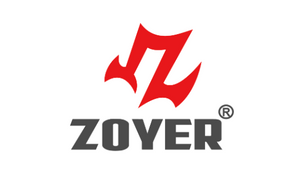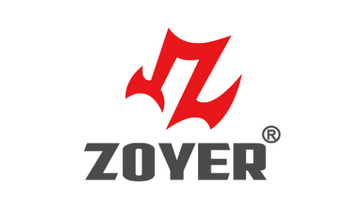If you’ve been diagnosed with a herniated disc, you know how painful and limiting it can be.
The right back brace can help relieve pressure, reduce discomfort, and support your recovery—whether you're sitting at your desk or going about your day.
This guide explains how herniated discs work, why back braces help, and how to choose the right one based on your symptoms and lifestyle.
We’ll also highlight expert-approved Zoyer products designed specifically for disc-related pain and support.
What Is a Herniated Disc—and Why Does It Hurt So Much?
A herniated disc (also called a slipped or ruptured disc) happens when the soft inner core of a spinal disc bulges or breaks through its outer shell, pressing against nearby nerves. This pressure can cause sharp pain, numbness, tingling, or weakness—often radiating down your leg or into your arms.
Trust me. This blog will interest you!How to Choose the Best Back Brace for Sciatica: Tips, Products & Relief Strategies
Understanding the Science: Pathology and Causes
Your spine is made up of bones (vertebrae) separated by shock-absorbing discs. These discs have a firm outer ring (annulus fibrosus) and a soft center (nucleus pulposus).
When that inner core pushes through the outer shell, it creates a bulge that can touch sensitive spinal nerves.
Common triggers include:
- Aging and disc degeneration
- Improper lifting or twisting
- Repetitive stress or poor posture
- Sudden trauma or strain
Depending on where the herniation occurs, you might feel symptoms in your lower back, buttocks, legs, or arms. The pain can range from mild stiffness to intense, radiating nerve pain that interferes with daily life.
When Should You Use a Back Brace for a Herniated Disc?
The severity of your symptoms will determine the kind of brace you need. Below is a breakdown of common symptom levels and recommended support types:
| Severity | Main Symptoms | Recommended Action | Brace Type |
|---|---|---|---|
| Mild | Occasional lower back pain, mild radiating pain | Rest, light activity modification | Elastic brace |
| Moderate | Persistent pain radiating to hips or legs | Physical therapy, moderate support | Semi-rigid brace |
| Severe | Radiating pain with numbness, weakness | Medical imaging, physician guidance | Rigid brace |
How Does a Back Brace Help a Herniated Disc?
Back braces work by limiting spinal movement and promoting a neutral spine position. This reduces pressure on the herniated disc and helps ease nerve compression. With the right brace, you can go about daily tasks more comfortably while protecting the injured area from further damage.
Decompression and Postural Support
A herniated disc often worsens with twisting, bending, or improper posture. A brace stabilizes your lower back, encourages healthy alignment, and distributes spinal load more evenly—giving your body the space it needs to heal.
Elastic vs. Rigid: What’s the Difference?
| Feature | Elastic Material Brace | Rigid Material Brace |
|---|---|---|
| Comfort Level | High; conforms to body shape | Lower; may need adjustment |
| Support Strength | Moderate; for mild cases | High; for severe disc issues |
| Breathability | Good; ventilated materials | Variable; some retain heat |
| Weight | Light and easy to wear | Heavier and bulkier |
What Should You Consider When Choosing a Back Brace?
Choosing the right brace depends on your symptoms, daily routine, and how much support you need. Let’s break down the three most important factors:
1. Support Level
| Support Type | Advantages | Disadvantages | Best For |
|---|---|---|---|
| Rigid | Maximum support, excellent pain control | Can be bulky and limit mobility | Severe herniation, post-surgery |
| Semi-rigid | Balanced support and comfort | Less firm than rigid types | Moderate pain, ongoing use |
| Elastic | Lightweight and breathable | Minimal structural support | Mild discomfort, daily posture help |
2. Fit and Sizing
A brace that’s too loose won’t help. One that’s too tight can restrict blood flow. Measure your waist at the belly button level and follow sizing guidelines closely.
| Size | Waist Circumference (cm) | Adjustment Range (cm) |
|---|---|---|
| S | 60–75 | 5–10 |
| M | 75–90 | 5–10 |
| L | 90–105 | 5–10 |
| XL | 105–120 | 5–10 |
3. Daily Usage Scenario
| Scenario | Recommended Brace | Primary Consideration |
|---|---|---|
| Office Sitting | Elastic or Semi-rigid | Breathability and lightweight |
| Heavy Lifting or Gym | Rigid | Maximum stability and core protection |
| Daily Housework | Semi-rigid | Balance of flexibility and support |
Recommended Back Braces from Zoyer
Zoyer offers several high-quality back braces tailored to different pain levels and recovery needs. Here’s a quick comparison:
| Product Name | Support Type | Price Range | Suitable Condition | Pros and Cons |
|---|---|---|---|---|
| ZOYER Recovery+ Essential Back Brace | Semi-rigid | Premium | Post-surgery, chronic herniated disc pain | + Dual pulley system + Semi-rigid lumbar contour − Higher price point |
| ZOYER Recovery Back Brace with Lumbar Support | Semi-rigid | Mid-range | Moderate back pain, lumbar strain | + 8 lumbar splints + Breathable, moisture-wicking fabric − Limited sizing (S/M, L/XL) |
| ZOYER Prevention Back Brace | Elastic | Budget | Daily posture support, mild pain | + Lightweight mesh + Great for all-day wear − Not suitable for severe conditions |
| ZOYER Performance Back Support Brace | Elastic | Budget | Light pain, fitness activities | + 8 flexible splints + Breathable, active-friendly − Not intended for medical-grade support |
| ZOYER Performance Waist Trimmer Belt | Elastic | Budget | Workout enhancement, core warmth | + Neoprene thermal design + Flexible and slim − Not for medical use |
User Reviews
"The Recovery+ Essential Back Brace gave me post-surgery support I didn’t know I needed. The dual pulley system is super easy to adjust."
— James L., New York
"I wear the Prevention Back Brace daily at my desk. It’s so comfortable I forget I have it on—and my posture has improved too!"
— Emily R., San Francisco
Expert Recommendations: When to Consult a Doctor
Before relying on any back brace long-term, consult with a medical professional—especially if your symptoms worsen or you experience numbness, leg weakness, or loss of bladder/bowel control.
Dr. Henry Tan, Orthopedic Spine Specialist, says: “Braces are an excellent supplement to conservative treatment, but they should always be paired with active therapy to restore strength and mobility.”
Common FAQs
Can I wear a back brace all day?
No—limit to 6–8 hours per day, and take regular breaks. Overuse can weaken your core muscles.
Does a back brace help with herniated discs?
Yes. It reduces nerve pressure, improves posture, and provides support so your disc has a better chance of healing.
Should I combine a brace with therapy?
Absolutely. Physical therapy alongside brace use is the gold standard for recovery.
How soon will I feel relief?
Some users feel improvement in a few days, while others notice relief after 2–3 weeks of consistent use.
Final Takeaway: Take the Pressure Off—Literally
A herniated disc can disrupt every part of your life—from work to sleep. But with the right back brace, you don’t have to live in constant discomfort. Whether you’re recovering from an injury, managing chronic pain, or just want to improve your posture, a supportive brace is a powerful step toward healing.
When in doubt, start with a semi-rigid brace like the Zoyer Recovery+ Essential Back Brace. It combines comfort, compression, and structure—perfect for moderate to severe disc issues. For daily wear and posture correction, Zoyer’s lighter options can help you move confidently while staying supported.

